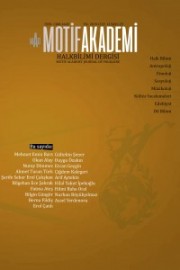ABJECT (İĞRENÇ) BEDEN OLARAK RUSALKA: SLAV DENİZKIZLARININ EDEBİ VE SANATSAL TEMSİLLERİ
RUSALKA AS AN ABJECT BODY: LITERARY AND ARTISTIC REPRESENTATIONS OF SLAVIC MERMAIDS
Author(s): Duygu ÖzakınSubject(s): Evaluation research, Theory of Literature, History of Art
Published by: Motif Halk Oyunları Eğitim ve Öğretim Vakfı
Keywords: Abjection; Kristeva; Butler; body; Slavic mythology;
Summary/Abstract: Positivist thought that defines female body as an unpredictable, overflowing the boundaries area of liquids and fluids, reproduces and consolidates the beliefs of the mythical system that is claimed to be located on the opposite side. Among these beliefs, the ones associated with the water, fluidity, humidity, darkness, lubricity of the feminine uncanny powers are reflected on the traditional and modern art works aesthetically, they were subjected to a taming by the transformative power of representation in art. One of these uncanny powers, rusalkas correspond to mermaids in Slavic mythology. They are the spirits of the untimely dead women, objects of fear but at the same time considered as symbols of fertility by virtue of their feminine nature. According to the belief, rusalkas kill male victims by drowning them to water; however, during the Rusalka Week, when they landed, they bring moisture and efficiency to the soil. This study aims to analyze the pushing of the female body to the periphery through post-structuralist theorist Julia Kristeva’s abject conceptualization. In the study, a Butlerian interpretation of the concept has been used in which being abject, overcoming its corporal definitions, gradually means being the other of society and related literary / artistic representations have been evaluated in this axis.
Journal: Motif Akademi Halkbilimi Dergisi
- Issue Year: 12/2019
- Issue No: 25
- Page Range: 31-49
- Page Count: 19
- Language: Turkish

